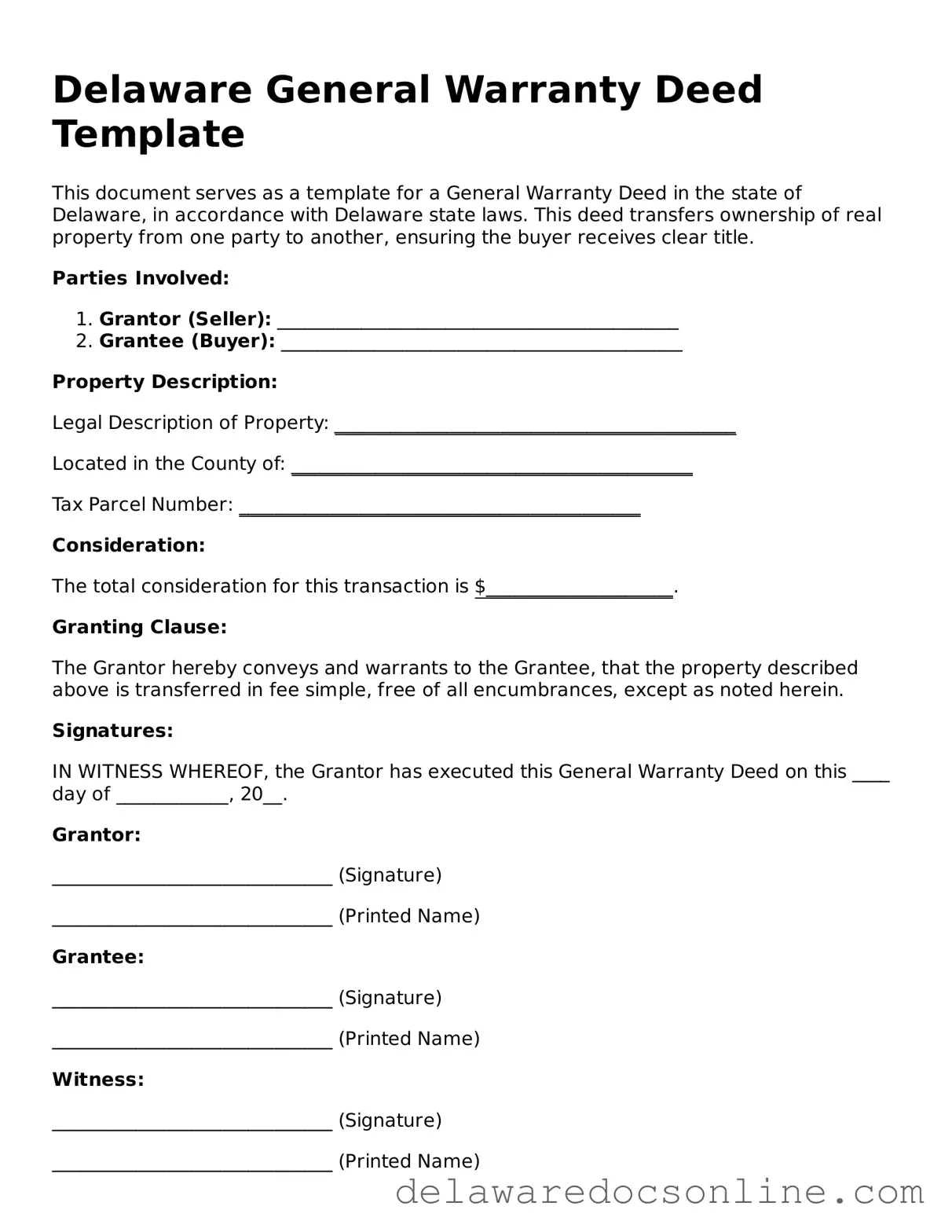Delaware General Warranty Deed Template
This document serves as a template for a General Warranty Deed in the state of Delaware, in accordance with Delaware state laws. This deed transfers ownership of real property from one party to another, ensuring the buyer receives clear title.
Parties Involved:
- Grantor (Seller): ___________________________________________
- Grantee (Buyer): ___________________________________________
Property Description:
Legal Description of Property: ___________________________________________
Located in the County of: ___________________________________________
Tax Parcel Number: ___________________________________________
Consideration:
The total consideration for this transaction is $____________________.
Granting Clause:
The Grantor hereby conveys and warrants to the Grantee, that the property described above is transferred in fee simple, free of all encumbrances, except as noted herein.
Signatures:
IN WITNESS WHEREOF, the Grantor has executed this General Warranty Deed on this ____ day of ____________, 20__.
Grantor:
______________________________ (Signature)
______________________________ (Printed Name)
Grantee:
______________________________ (Signature)
______________________________ (Printed Name)
Witness:
______________________________ (Signature)
______________________________ (Printed Name)
Notary Public:
State of Delaware, County of ____________
Sworn to and subscribed before me this ____ day of ____________, 20__.
______________________________ (Notary Signature)
My commission expires: ________________
